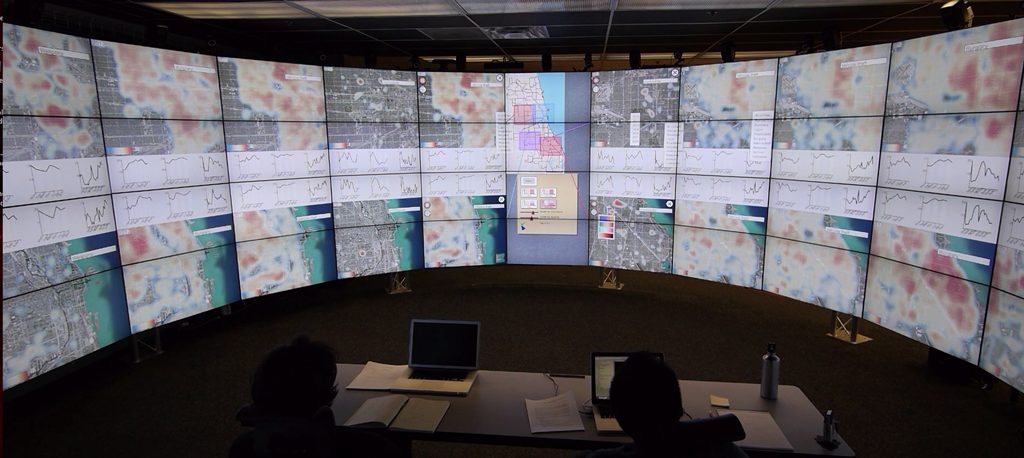Exploratory Visual Analysis in Large High-Resolution Display Environments
August 15th, 2014
Categories: MS / PhD Thesis

Authors
Reda, K.About
As society continues to generate escalating quantities of data, there is an increasing demand for perceptual and cognitive aids to help us make sense of the available troves of digital information. Visualization represents one of the most effective ways for exploring large datasets by leveraging our visual-perceptual capacities. Unfortunately, the scalability of visualizations has been limited by the prevailing display technology. Conventional desktop and laptop displays provide too few pixels to visualize today’s datasets, forcing users to contextually switch between different views in order to see alternate projections of the information space. This limitation has been known to reduce user performance and potentially hinder exploration by inducing a ‘tunnel vision’ phenomenon where the analysis is focused on and limited to isolated subsets of the information space. However, thanks to advances in display technology, it is becoming increasingly feasible and affordable to surpass the limitations of conventional displays by building and acquiring Large High-resolution Displays. These displays are rapidly proliferating, providing researchers and scientists with more scalable platforms for the visual analysis and exploration of large and complex datasets.
This dissertation investigates the impact of adopting large high-resolution displays on user strategy and insight acquisition during exploratory visual analysis. First, we present a theoretical account of the cognitive costs involved in visual exploration, and highlight the implicit role of the visualization interface in modulating these costs. Second, we propose design patterns for constructing coordinated, multi-view-based visualizations for large high-resolution displays. We then empirically investigate the effects of increasing the physical size and resolution of the visualization interface through observational and experimental studies. Our findings indicate improvement in discovery and insight acquisition, when users are provided with physically larger displays and more pixels. This effect manifests in a significant increase in the number of observations reported during visual exploration as well as the acquisition of higher-level, more integrative insights. These results suggest a role for large high-resolution displays in fostering discovery in data-intensive visual exploration scenarios.
Resources
Citation
Reda, K., Exploratory Visual Analysis in Large High-Resolution Display Environments, Thesis submitted as partial fulfillment of the requirements for the degree of Doctor of Philosophy in Computer Science, Graduate College of the University of Illinois at Chicago, Chicago, IL, August 15th, 2014.